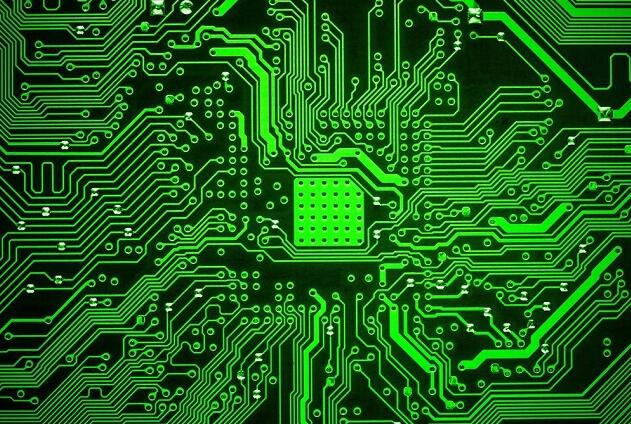PCBA processing multi-layer board outer layer processing technology introduction
1 PCBA processing process purpose
After drilling and through-hole plating, the inner and outer layers are connected. This process is making the outer circuit to achieve electrical integrity.
2 Production process
Copper surface treatment-lamination-exposure-development.
PCBA processing and drilling
First choose a suitable drill bit. Take the ordinary connector hole as an example. Choose a 0.95mm drill bit. After installing the drill bit, place the circuit board flat on the drill press platform, turn on the power of the drill press, and slowly press down the drill press rod., Adjust the position of the circuit board at the same time, make the drilling center point align with the drill bit, hold the circuit board still, press down the drill bit pressure rod, so that a hole is made. Lift the drill press rod, move the circuit board, and adjust the center position of other holes on the circuit board to drill other holes. Note that the holes are of the same model at this time. For other types of holes, after replacing the drill bit of the corresponding specification, drill the hole in the same way as above.
Special Note:
Before punching, it is best to spray the circuit board corroded by FeCl3 with transparent paint to prevent the circuit board from being oxidized.
Use a 0.95mm drill bit for the hole that does not need a sinking copper ring. For PCBA processing, use a 1.2mm drill bit for the hole that requires a sinking copper ring, and 0.4 drill bit for the through hole.
PCBA processing dry film introduction
The structure of the dry film is shown in Figure 8.1. After the dry film of this optically active polymer was developed by DuPont in 1968, the production of PCB entered another era. By the end of 1984, after DuPont’s patent expired, Japan HITACHI also has its own brand coming out. Since then, other labels have joined the battlefield.
According to the history of dry film development, it can be divided into the following three types:
-Solvent imaging type
-Semi-aqueous development type
-Alkaline aqueous solution development type
is almost the latter’s world PCBA processing, so this chapter only discusses this type of dry film.
A. Composition of dry film
Water-soluble dry film is mainly due to its composition containing organic acid radicals, which will react with strong bases to become organic acid salts, which can be dissolved in water. Its composition is shown in Figure 8.1. The water-soluble dry film was first introduced by Dynachem. It was developed with sodium carbonate and stripped with dilute sodium hydroxide. Of course, after continuous improvement, the mature and complete product line can be obtained today.
B. Process steps
The dry film operation environment needs to be operated in a clean room with yellow lighting, good ventilation, and temperature and humidity control to reduce pollution and improve the quality of the resist. The main steps are as follows:
Lamination─stop─exposure─stop─display.
2.2.2 Lamination operation
A. The film press machine can be divided into manual and automatic two types. There are four main parts: the reel for collecting polyolefin interlayer, the main wheel for dry film, the heating wheel, and the ventilation equipment, which can be operated continuously. Please give your opinion. Figure 8.2
The general conditions for film lamination are:
Laminating heat wheel temperature 120°±10°C
Plate surface temperature 50±10 degree Celsius
Pressing film speed 1.5~2.5m/min
Pressure 15-40 psi
a. The traditional manual laminating machine requires two people to work, one to feed the plate in front of the machine, and one to collect the plate and cut off the dry film behind the machine. This method is suitable for samples, small quantities and multiple material numbers, and consumes manpower and materials. A lot of waste.
b. There are many brands of automatic laminating machine, such as HAKUTO, CEDAL, SCHMID, etc. The mechanism action is different in the way of sticking and pressing the dry film at the front edge of the board and the film cutting action at the trailing edge of the film, but they all speed up the production speed and save money. The dry film and adhesion ability are improving.
C. Domestic Zhisheng developed an automatic laminating machine a few years ago, which was quite successful in many large domestic factories.
D. The dry film reaches its glass transition point at the above temperature and has fluidity and filling properties, and can cover the copper surface. PCBA processing, but the temperature should not be too high, otherwise it will cause the polymerization of the dry film and cause difficulty in imaging. If the front board can be preheated, its adhesion can be enhanced.
E. In order to achieve the high quality of fine-line high-density boards, it is necessary to start from the environment and equipment, and the lamination of dry film needs to be clean
is carried out in the room (above 10K), the ambient temperature should be controlled at
23°±3°C, relative humidity should be about 50%RH±5%.

PCBA processing operators should also wear gloves and antistatic dust-free clothing.
PCB processing exposure machine type
-Manual and automatic
-Parallel light and non-parallel light
-LDI laser direct exposure
A. Manual exposure machine is to manually set the PIN of the upper and lower negatives of the board to be exposed, send it to the machine table, and then expose it after vacuuming.
B. Automatic exposure machines generally include loading/unloading. Tool holes must be made in the outer frame of the board, and the initial positioning is then performed by the CCD on the machine to check the alignment of the film and the holes, and then enter the exposure area after fine-tuning. . According to the current precision requirements, without automatic alignment with a vision machine, I am afraid that a good quality board cannot be made.
C. How to measure and evaluate the parallelism of the exposure machine: